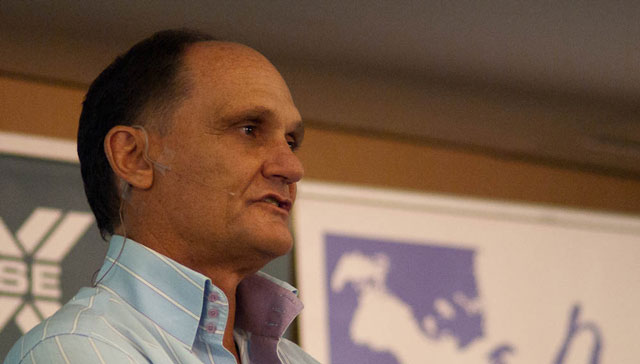
MTN South Africa CEO Zunaid Bulbulia has lashed out at telecommunications regulator Icasa, accusing it of behaving “irrationally” and threatening future investments in network infrastructure through its plan to cut wholesale mobile call termination rates from 40c/minute to 10c/minute over the next three years.
Termination rates are the fees operators charge each other to carry calls between their networks. Icasa is reducing the rates in the hope that the savings will be passed on to consumers in the form of lower retail tariffs. But Bulbulia argues that there is no correlation between termination rates and retail prices, saying that tariffs have come down in recent years because of retail competition and not lower wholesale fees.
Bulbulia has also slammed Icasa for the preferential termination rates — known as “asymmetry” — it has proposed for Cell C, in terms of which Vodacom and MTN will pay more to send calls to Cell C customers than vice versa. He says this would amount to propping up a “failing business” and taking money from Vodacom and MTN to repay the debt Cell C owes its foreign shareholders while endangering the two bigger operators’ network investments.
Already, he says, the MTN group board has cut its budget allocation for capex for the South African operation for 2014 because of regulatory uncertainty. He says South Africa’s current termination rate of 40c/minute is “not out of kilter” with other African markets, or even with markets in Europe, and that cutting it to 10c/minute would make the rate one of the lowest worldwide.
MTN South Africa has invested between R4bn and R5bn a year in its network for the past five years, Bulbulia says. This is now threatened by Icasa’s proposed framework for termination rates. He says that the speed at which Icasa is proposing reducing the rates will cause “a shock” to the industry.
He says the regulator behaved responsibly in the past when it reduced termination rates from R1,25/minute to 40c/minute over a glide path period of four years. “That allowed us to reshape our business, reshape our costs, reframe propositions and nurse the business to a point where we were not forced to be in a position to take dramatic steps. For some reason, what has been a very successful glide path transition in the past has been abandoned.”
I’ve never heard such nonsense. The link between cutting termination rates and retail pricing is tenuous at best. Retail prices are driven by competitive activity.
Icasa wants termination rates to fall from 40c/minute now to 20c/minute on 1 March 2014. “That’s a cliff,” says Bulbulia. “The impact of that will be massive.”
He says cutting the rate to 10c/minute by 2016 will have a “multibillion-rand impact at the revenue and Ebitda lines”. Ebitda — a measure of operating profit — is short for earnings before interest, tax, depreciation and amortisation. The rate cuts proposed by Icasa will “damage” MTN and other operators and affect their capital reinvestment, he adds.
“It’s bizarre and completely out of whack of what we’re seeing anywhere else in Africa or in Europe.”
Bulbulia accuses Cell C CEO Alan Knott-Craig of unfairly painting an association between mobile termination rates and retail prices. He has positioned himself as the “consumer champion”, suggesting that with lower termination rates and asymmetry, Cell C will lead the way to lower retail tariffs. “I’ve never heard such nonsense,” Bulbulia says. “The link between cutting termination rates and retail pricing is tenuous at best. Retail prices are driven by competitive activity. If tomorrow Icasa increased the rates, I think you’d still see retail pricing coming down.”
He says, too, that asymmetry in termination, and especially the fact that the rate of asymmetry is set to increase over the next three years, makes no sense given that Cell C has been in the market for more than 12 years. “Nowhere in the world does asymmetry last beyond three years. We find no justification whatsoever for this.”
MTN South Africa is not making super profits, he adds. Compared to the MTN group, which has operations in 22 countries, the South African business’s Ebitda is “way below average”.

“The main reason for this is we still subsidise handsets and people underestimate the impact that has had on the South African market,” he says. These subsidies helped South Africa reach 100% Sim card penetration “faster than anywhere in the world”.
“I don’t think the incumbent operators have taken enough time to explain that what Cell C is running is a campaign as consumer champion but designed as a mechanism to get MTN and Vodacom to subsidise a business that is failing,” he says.
“If we give Cell C this asymmetry, that money we will hand over as a regulatory subsidy will be used not for capex but to settle shareholders’ debt, which sits offshore,” Bulbulia says. “We don’t want to get to a point where the networks stop investing. I dread the day when we get our version of rolling blackouts because the networks were not investing because we were subsidising a business which now has to repay loans to Lebanese and Saudi shareholders.”
He also criticises Cell C over claims that it has among the cheapest call rates in South Africa. He says both MTN and Vodacom have rates that are effectively significantly below Cell C’s headline rate of 99c/minute. “The effective rate on Vodacom is 59c/minute and we’re in the same vicinity.
Customers’ money lasts longer on the Vodacom and MTN networks because we give customers a huge amount of free and discounted airtime, leading to an effective tariff that is way below 99c. The bizarre thing is that 99c is not the lowest rate in the market; it’s the highest rate in the market.”
He says that Icasa, in its “desire to protect Cell C”, could achieve negative outcomes it was not anticipating. “The unintended consequence could be that MTN and Vodacom will decide not to continue to invest. If our returns are better in another country, we’ll put that money in another country. Those decisions are becoming more and more real in our business.” — (c) 2013 NewsCentral Media
- Cell C has been asked to respond — look out for a follow-up article




